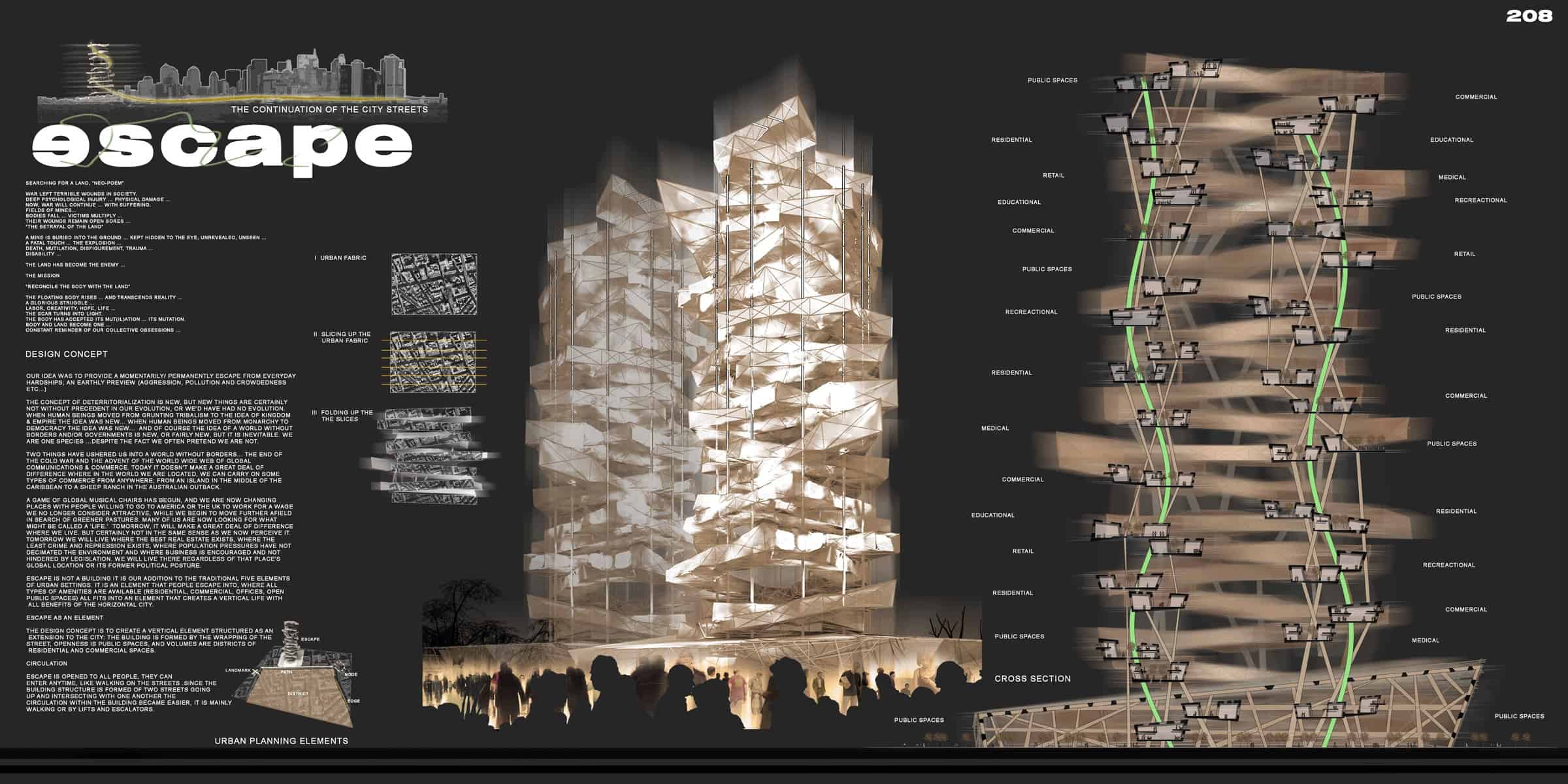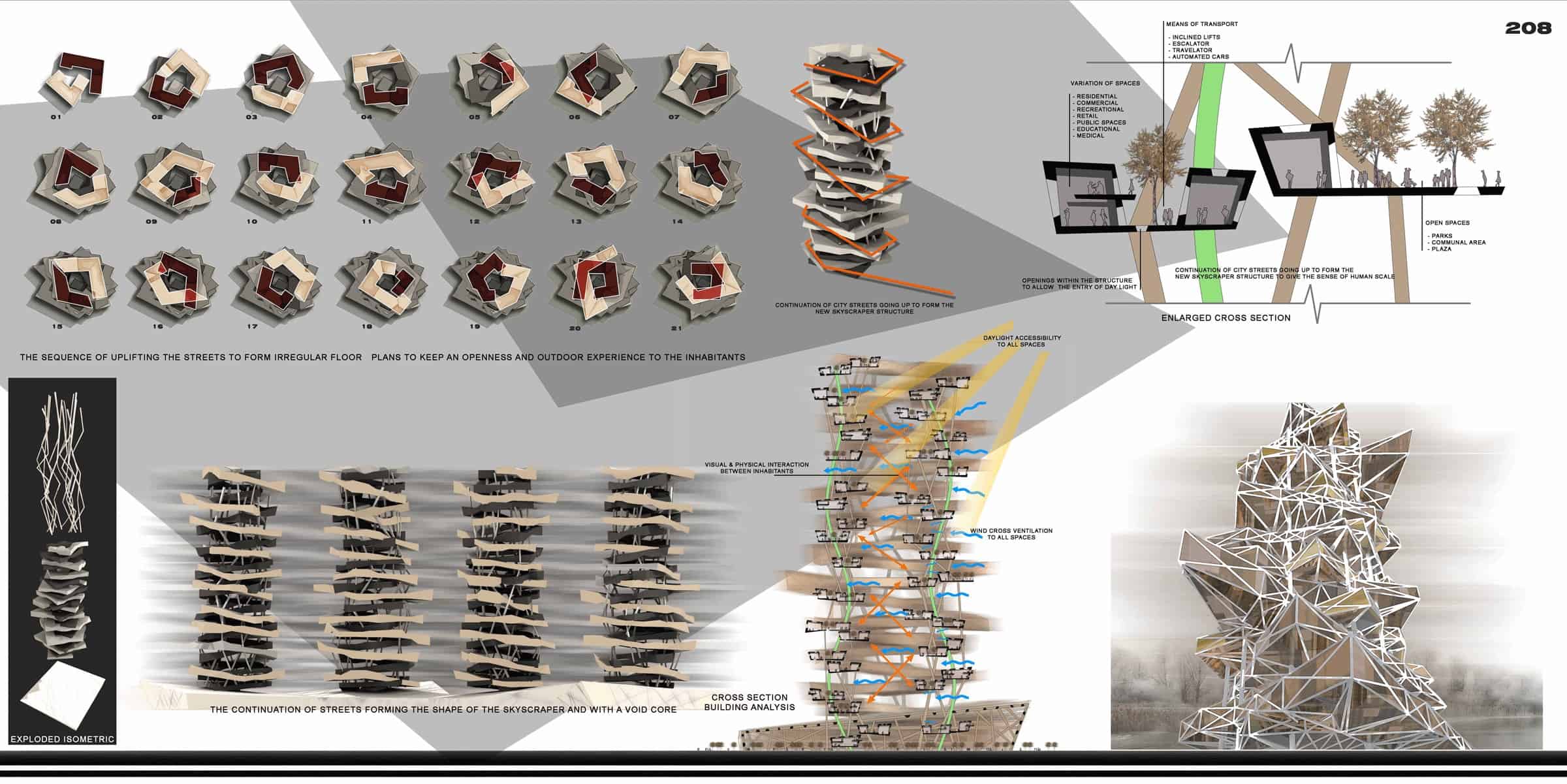Special Mention
2008 Skyscraper Competition
Akram Damisi, Ghalia Bisharat, Firas Thalji, Alaa Abdalat, Ashraf Damisi
Jordan

The concept of high density in cities is one that has transformed the modern city. Architecture and technology made the development of towers and skyscrapers just another element of the modern city’s urban fabric, casting large shadows on social life, both literally and metaphorically speaking. The changed urban fabric brought with it a change in urban life. In these cities, crowdedness, pollution, traffic, noise, and crime, have become an everyday experience. The private, single-use, outsized skyscraper brought on a hefty impact on city life. The instinct to climb up to some high place, from which you can look down and survey your world, seems to be a fundamental human instinct. However, while the rest of the urban world lay in the horizontal, the vertical presence in the city became a privilege for a few; a private realm that towered over the urban stage of everyday life.
Escape blends the private and public realm into a structure that becomes, in essence, a vertical realization of our horizontal urban fabric. The streetscape is stretched and wrapped around a vertical structure, pumping urban existence and energy into a perpendicular stance. This landmark in the city, becomes a natural part of the topography, which includes a physical climb, giving people the satisfaction of climbing up to a high place from which to look down. Escape takes the idea of high density to a new level. It drives the city into the openness of a high-rise structure with public access and mixed lanes that are continuously in use. Residential, commercial and office use, on the banks of a constant ramp that continues from the city street to reach the top of the structure, gives people the benefits of a human scale interaction within a large scale metropolis.
A second street wraps around the structure, at instances, intersecting with the first street. This generates an urban feel that is recognized by the users, and that resembles the successful urban plan of much acclaimed cities. The concept of deterritorialization is new, but new things are certainly not without precedent in our evolution, or we’d have had no evolution. When human beings moved from grunting tribalism to the idea of kingdom & empire the idea was new; when human beings moved from monarchy to democracy the idea was new; and of course the idea of a world without borders and/or governments is new, or fairly new, and inevitable. We are one species. despite the fact we often pretend we are not. Escape is not a building, but our addition to the traditional five elements of urban settings. It is an element that people escape into, where all types of amenities are available (residential, commercial, offices, open public spaces) and fit into an element that creates vertical life with all benefits of the horizontal city.
Escape is open to all people, they can enter anytime, as if they were walking on the streets. Since the building structure is formed from two streets going up and intersecting with one another, the circulation within the building becomes easier, mainly by walking or lifts and escalators. It is accessible to all types of people, to enjoy life, and escape the pollution, crowdedness and aggression of the horizontal city.


This work is licensed under a Creative Commons License permitting non-commercial sharing with attribution. https://creativecommons.org/licenses/by-nc-nd/4.0/



